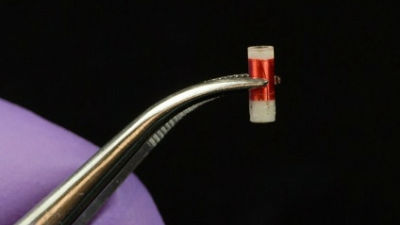A new method to significantly increase the testing ability of new type coronavirus infection using `` standby testing equipment '' appears

A policy has been announced to increase the number of tests for new type coronavirus infection (COVID-19) in various countries around the world, and in Japan Prime Minister Shinzo Abe also announced that
BillionToOne's COVID-19 Response
https://www.billiontoone.com/covid-19
BillionToOne Announces Groundbreaking New COVID-19 Test Unlocking One Million Daily Tests | Newswire
https://www.newswire.com/news/billiontoone-announces-groundbreaking-new-covid-19-test-unlocking-one-21125115
Increasing the number of PCR tests for new coronavirus infections will help to find hidden patients and implement effective home isolation policies and prevent the spread of new coronavirus infections. However, conventional PCR testing equipment can only test about 48 samples at a time, and it is difficult to meet the rapidly increasing demand for testing for new coronavirus infections. BillionToOne points out that even if medical institutions increase the frequency of taking samples from patients, the amount of test equipment and reagents will become a bottleneck.
Meanwhile, BillionToOne announces that it has developed a new test method that achieves a processing capacity that greatly exceeds conventional PCR tests. BillionToOne CTO David Tsao described the new test method as `` reusing existing equipment, eliminating time-consuming RNA extraction steps, and enabling a distributed system for COVID-19. '' You.
We've been working hard @BillionToOne on a new COVID-19 test that scales testing to everyone in the US https://t.co/izvVyc7TJm .
— David Tsao (@dtsao) April 7, 2020
It (1) re-purposes existing infrastructure, (2) eliminates time-consuming RNA extraction, and (3) enables a distributed system for COVID-19 testing.
BillionToOne's research team focused on the “ Sanger sequencing ” test method used in the Human Genome Project to analyze the human genome when developing a new test method for a new type of coronavirus infection. The research team has developed a method to detect the genome of a new type of coronavirus using an automated Sanger sequencer using a machine learning algorithm. BillionToOne claims that the new method can eliminate the time-consuming PCR extraction step in PCR testing, and that it has the same sensitivity and specificity as existing PCR testing.
Since a single Sanger sequencer can process up to 3840 samples per day, it can achieve 30 times the processing capacity compared to a single conventional PCR inspection device.
The first thing we figured out is how to run COVID-19 tests on existing automated Sanger sequencers.One sequencer can process up to 3840 samples per day.There are hundreds of sequencers of excess capacity because they were built for the Human Genome Project over 20 years ago.
— David Tsao (@dtsao) April 7, 2020
Sanger sequencers that have been developed and deployed with the Human Genome Project and have surplus capacity exist around the world. There are more than 10 Sanger sequencers in California alone, but with just two Sanger sequencers, it seems that they can perform inspections that exceed the overall inspection capacity of California at the time of article creation.
It would take only 2 sequencers to surpass the current test capacity for all of California.There are far more than 2 sequencers in California (some individual labs have 10 or more).
— David Tsao (@dtsao) April 7, 2020
Tsao believes that `` by skipping RNA extraction and using an automated Sanger sequencer, we can add 200,000 samples per day to existing clinical laboratories in the United States. 'And comment. The new test method uses different equipment and reagents than the existing PCR test, so it does not disturb the running PCR test system.
By skipping RNA extraction and using automated Sanger sequencers, we think the US can get to an additional 200,000 samples per day test capacity in existing clinical labs.
— David Tsao (@dtsao) April 7, 2020
Testing for a new type of coronavirus infection using a Sanger sequencer can be easily performed in any laboratory where a Sanger sequencer is deployed with minimal training. At the time of writing the article, it seems that due to regulations it is not possible to test for new coronavirus infection using a Sanger method sequencer, but if the U.S. Food and Drug Administration (FDA) is granted emergency clinical use, it will be possible to test reagent kits within two weeks. It can be manufactured and deployed in the laboratory.
'We've all seen the impact of this pandemic on all aspects of everyday life, from loss of life to economic damage to the burden on healthcare systems,' said Dr. Oguzhan Atay , CEO of BillionToOne . The new coronavirus has had a devastating impact on the country, we are honored to be at the forefront of fighting pandemics, and we are confident that BillionToOne's unique technology will save lives and stop the spread of the virus I do. '

Related Posts:
in Science, Posted by log1h_ik







